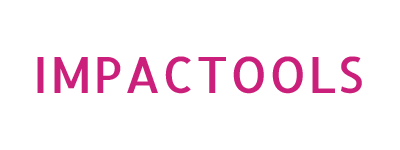Procurement Riddles (Part 1)
One field where the “fight” against corruption has been perhaps the least effective is procurement, rather referred generally as contracting. It is difficult to put it more bluntly. The technical director (now on leave) of the company in charge of building the Berlin Airport (BER) is currently being investigated for alleged bribery. In his former role as consultant to this same company, and apparently with powers to award contracts, he may have requested a bribe in the amount of 500 thousand Euros to award a contract[i]. In Colombia, 9 thousand km away and more frequently badmouthed than Germany, a few years ago two brothers and their cousin organized a simple and effective scheme of bribes, revolving doors and conflicts of interest to successfully secure visible infrastructure contracts[ii]. The good thing in both cases? Prosecutors are looking into the matter. The annoying commonalities? This is corruption 1.0: we are not talking about sophisticated, complex, high-tech schemes that would escape expert scrutiny. Corruption in public procurement is there to stay, despite overarching changes in structures, regulation and awareness. It is hard to say if we have more or less cases of corruption as we have neither measurements nor clear indicators[iii]. What we do have is to face reality and reflect to see where we can change sails, make contributions and promote efforts. Why is corruption in procurement so hard to break? Here a few personal insights on what contributes to this problem:
- The tyranny of political will. This is the curse of much of governmental-based reform: it is highly dependent on political will. Governments have usually a high turnover, and as officials change, reform and political will for it turn unstable.
- Resilience is low. The multi-stakeholder hype we are living plays a lot of hopes on civil society. However, procurement reform requires sustained efforts that are difficult for civil society organizations (CSOs) to deliver. It also requires technical (specialized) expertise that is either not available or too expensive. Finally many efforts start of well but end too quickly.
- Checklists as Totems. Most efforts on procurement reform have focused on the structures (the laws, the institutions) and less on actual behavior change. This made it easy for stakeholders to “tick” the box, and also for criminals who knew nothing would really change. The problem is that change requires sustained effort and nothing can be taken for granted. Instead, checklists give us the false impression that change has taken place. We look less at real behavior change, partly because this is hard to achieve and difficult to observe. Country reviews, expert analysis and ratings often keep focusing on checklists, and with this reinforce the illusion that everything should be alright.
- Nobody said it was easy. Procurement reform requires a combination of skills that are hard to replicate or find in one place: technical knowledge, specialized expertise, social skills (negotiation, facilitation, persuasion), creativity and knowledge of best practices. Honestly, with such profile, there are funnier industries to work with.
- The egg and the chicken. From all fields in which corruption is pervasive, it is in procurement where we find most acutely a combination of efficiency, error and corruption problems that are often difficult to separate. Any successful approach needs to recognize this. However, they are often confused both by solution-finders and troublemakers just as well.
- Transparency, transparency, transparency. The impact of transparency is still underestimated by many, and sometimes restricted to the publication of information. But take transparency as a way of doing things and you sum up participation, accountability and responsibility all in one. Some countries are starting to release important data and some even to publish contracts. Still, some of the more daring ones puzzlingly are in the “south” of the development equator. There are also important efforts to spark participation and use into disclosure. We need to keep that direction, convert more countries, check our goal posts and add behavior change to the recipe.
- The third eye. Independent monitoring (in different shapes and forms) has shown good results. It is however hard to sustain as the right monitor is hard to find: appropriate experts do not understand corruption or corruption experts lack specialized expertise. Quality control on their work is also hard to deliver. My impression (shared with other experts I have discussed this with) is that supporting monitors would enhance impact in this field on its own.
There are good efforts out there. For example, the Transparency and Accountability Initiative has laid important questions on the right spot (and is aiming for innovative answers as well)[iv]; the Open Contracting Initiative took on the agenda as inclusively as it should and is taking important steps on standards, transparency and participation[v]. Integrity Action has also undertaken and sponsored innovative approaches on monitoring worth looking at[vi]. Global Integrity has a healthy approach and relevant and creative contributions also to overarching issues of governance and measurement[vii].
And there is still a lot to do. For example, we need to seriously learn. There are however very few systematic efforts to do so; to this date I am not aware of serious evaluations of the impact of procurement measures (including integrity pacts, legal reform, management and process reforms). I still wonder why every time I have raised the idea/need to evaluate the integrity pact I get surprised reactions mixed with denial. We also need to check again our assumptions: about how the ideal contracting processes look like, and about how we fight corruption in contracting. Governance and anti-corruption reviews[viii] should look into practices and actual behavior and we, as self acclaimed experts, should work on those basis. We also need to stop group-thinking and open up to new ideas. What, for example, would you (yes, you reader) would suggest as alternative ways to allocate public funds openly and safely?
__________________________________________________
[i] See here https://www.sueddeutsche.de/wirtschaft/korruptionsvorwuerfe-dobrindt-fordert-externe-kontrolle-fuer-berliner-flughafen-1.1981483
[ii] See here https://www.semana.com/nacion/articulo/asi-milagro-nule/123920-3 and here https://lasillavacia.com/historia/asi-se-conectan-las-piezas-del-cartel-de-la-contratacion-21543 among others.
[iii] While acknowledging limitations and difficulties of causality attached to any anti-corruption approach, and still too focused on institutions to be trend-setting, there is an interesting exercise undertaken by PWC and Ecorys with support of the Utrecht University fort he European Commission, published on June 2013. The study was aimed at identifying costs of corruption in procurement but makes important contributions towards benchmarking. Be prepared however, to endure 371 pages. See https://ec.europa.eu/anti_fraud/documents/anti-fraud-policy/research-and-studies/identifying_reducing_corruption_in_public_procurement_en.pdf
[iv] See https://www.transparency-initiative.org/
[v] See http://www.open-contracting.org/
[vi] See http://www.integrityaction.org/
[vii] tba



Leave a Reply
Want to join the discussion?Feel free to contribute!